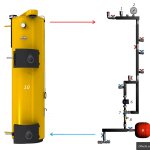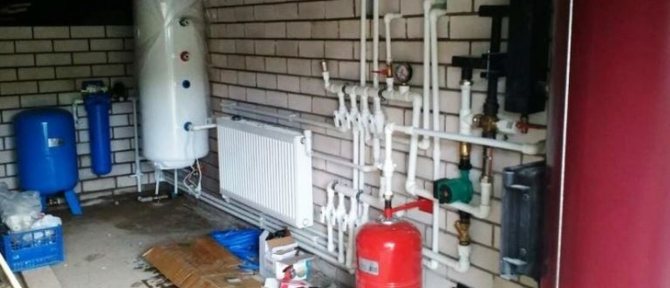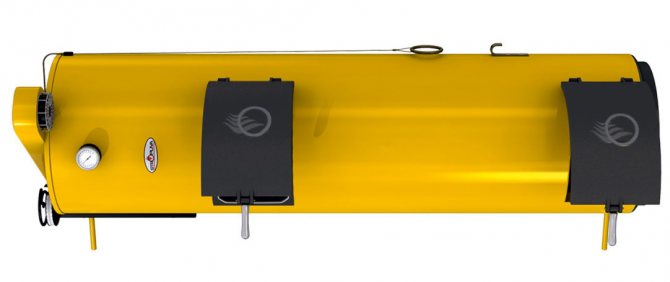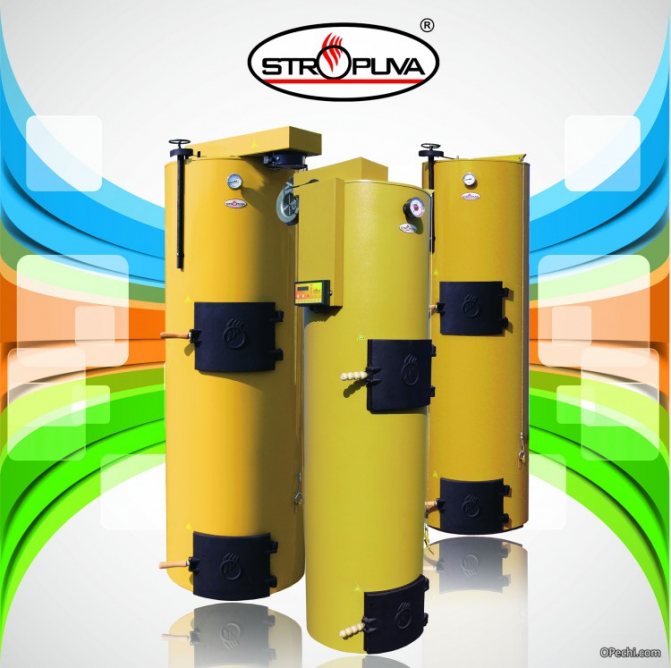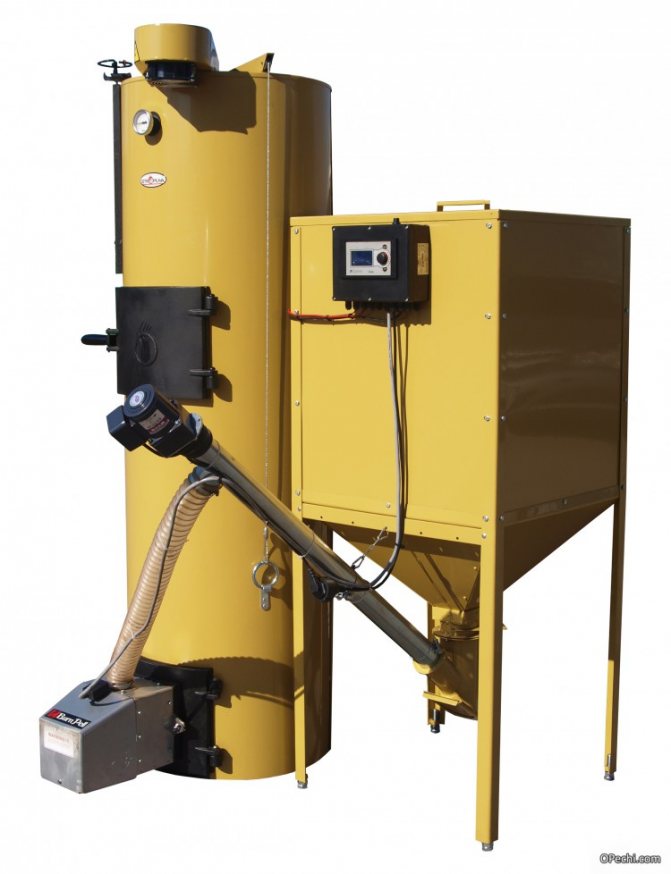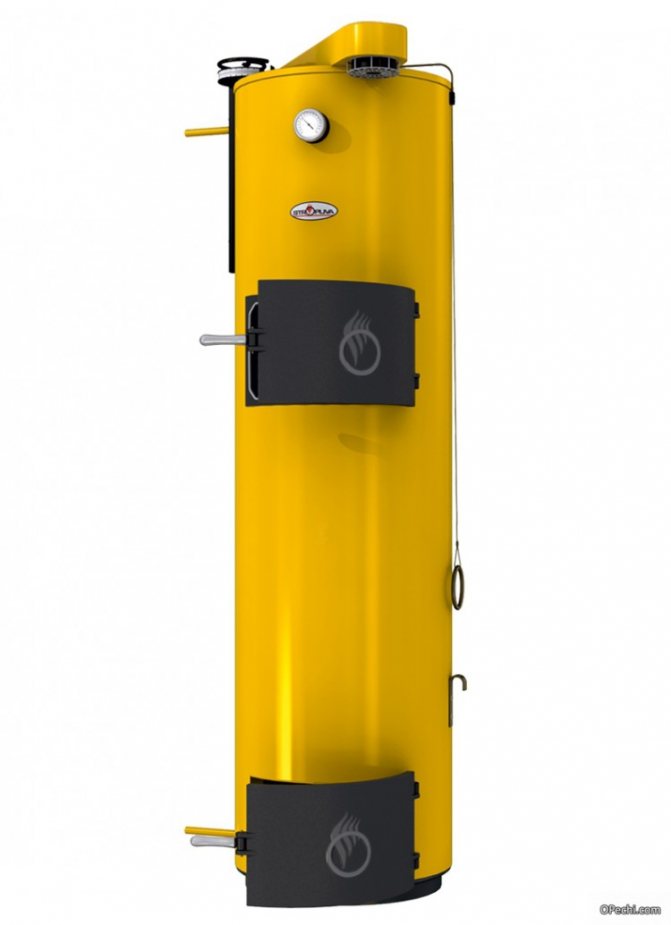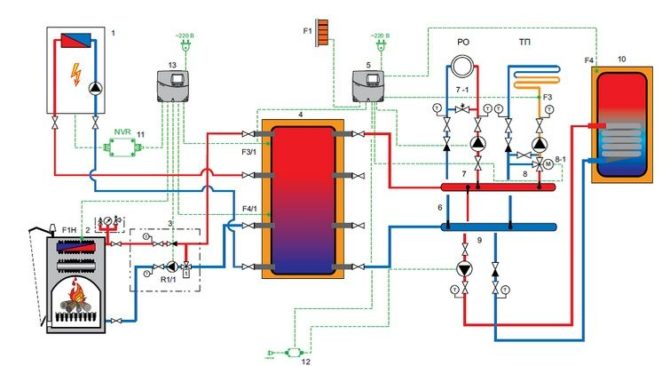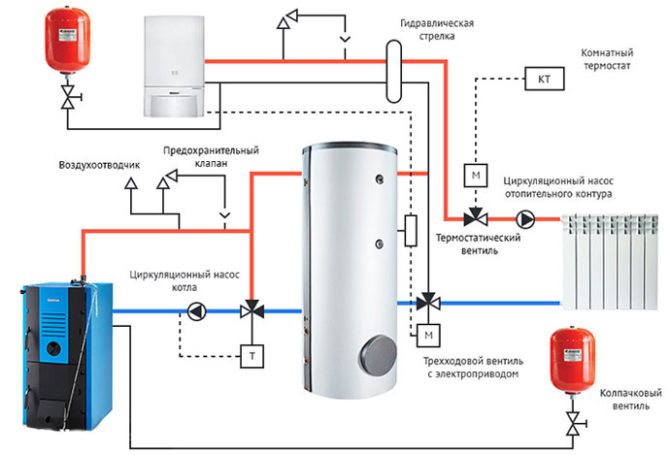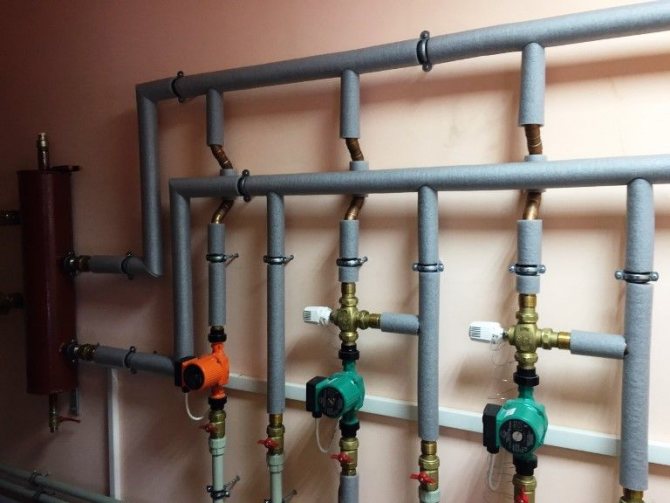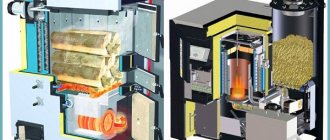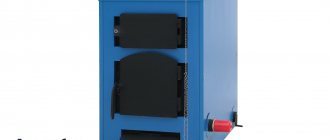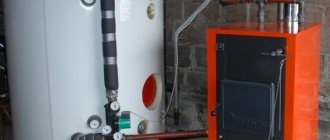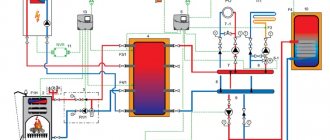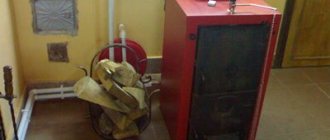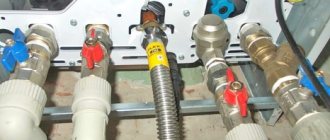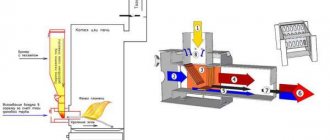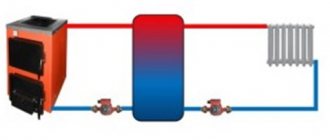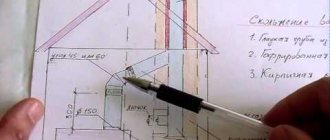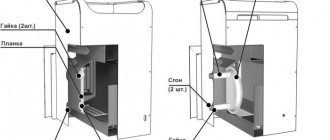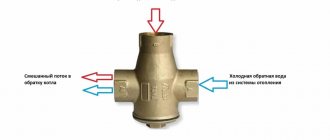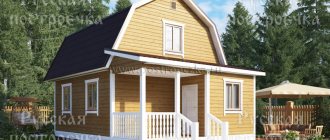List of structural elements of the Stropuva boiler.
In the previous article, we talked about long-burning stoves for a house, a summer residence, a bath, how to heat them. Today we will talk about two similar units in their principle of operation - the Lithuanian boiler Stropuva and Bubafonya from Kolyma, and even try to compare them. Those who think whether it is possible to make Stropuv's boiler with their own hands will have to be upset, most likely, this will not work.
Some structural elements are very complex and can only be produced in a production environment using machine tools. But the domestic, simplified analogue can be assembled in a day. Of course, it does not have such high characteristics as factory units, nevertheless, it will heat a summer cottage or garage in no time. The variant is super economical and practical, like the AK-47.
Types and technical characteristics
At the moment, Stropuva is available in three varieties: wood, pellet and universal. Each of these three types is designed for a specific type of fuel, but can work on any other, albeit with less efficiency. In total, the line includes 4 standard sizes: 10, 15, 20, 40 kW and the Mini version with a capacity of 8 kW.
The Stropuva wood-fired boiler is equipped with a special air distributor that allows you to efficiently burn wood, has the following characteristics:
| Model | Mini S | S10 | S15 | S20 | S40 |
| power, kWt | 8 | 10 | 15 | 20 | 40 |
| Room area, m2 | 30-80 | 50-100 | 75-150 | 100-200 | 200-400 |
| Efficiency,% | 86,3 | ||||
| Firewood capacity, dm³ | 120 | 150 | 200 | 230 | 360 |
| Chimney diameter, mm | 160 | 180 | 200 | ||
| Burning duration, h | 31,5 | ||||
| Price, rub | 65 000 | 87 150 | 92 348 | 97 545 | 107 730 |
The pellet version is equipped with a pellet distributor and an air supply manifold. Pellet boilers have the following data:
| Model | Mini SP | S10P | S15P | S20P | S40P |
| power, kWt | 8 | 10 | 15 | 20 | 40 |
| Room area, m2 | 30-80 | 50-100 | 75-150 | 100-200 | 200-400 |
| Efficiency,% | 86,3 | ||||
| Pellet capacity, kg | 50 | 70 | 110 | 120 | 200 |
| Chimney diameter, mm | 160 | 180 | |||
| Burning duration, h | 72 | ||||
| Price, rub | 65 000 | 91 350 | 97 072 | 102 795 | 112 980 |
The last representative of solid fuel boilers is universal. These devices are capable of operating on coal, wood, fuel briquettes and pellets. The delivery set includes distributors for all types of fuel, as well as an air supply manifold. They have the following technical characteristics:
| Model | Mini SP | S10P | S15P | S20P | S40P |
| power, kWt | 8 | 10 | 15 | 20 | 40 |
| Room area, m2 | 30-80 | 50-100 | 75-150 | 100-200 | 200-400 |
| Efficiency,% | 86,8 | ||||
| Pellet capacity, kg | 50 | 70 | 110 | 120 | 200 |
| Chimney diameter, mm | 160 | 180 | 200 | ||
| Duration of coal burning, h | 130 | ||||
| Price, rub | 65 000 | 102 700 | 114 608 | 121 380 | 127 995 |
As you can see, from the presented model range, you can choose a solid fuel boiler for any room, type of fuel and available budget.
Principle of operation and design
The main technological feature of the Stropuva boiler is the use of a top-down combustion scheme. Combustion provides air supply through a diffuser telescopic tube on which a round seal is mounted. Acting like a piston, the pipe with a sealant under its own weight is constantly lowered to the burning fuel layer, providing oxygen supply. The compactor compresses the ash that remains at the top. The heated gases transfer their heat to the walls of the furnace, after which they are removed through the chimney.
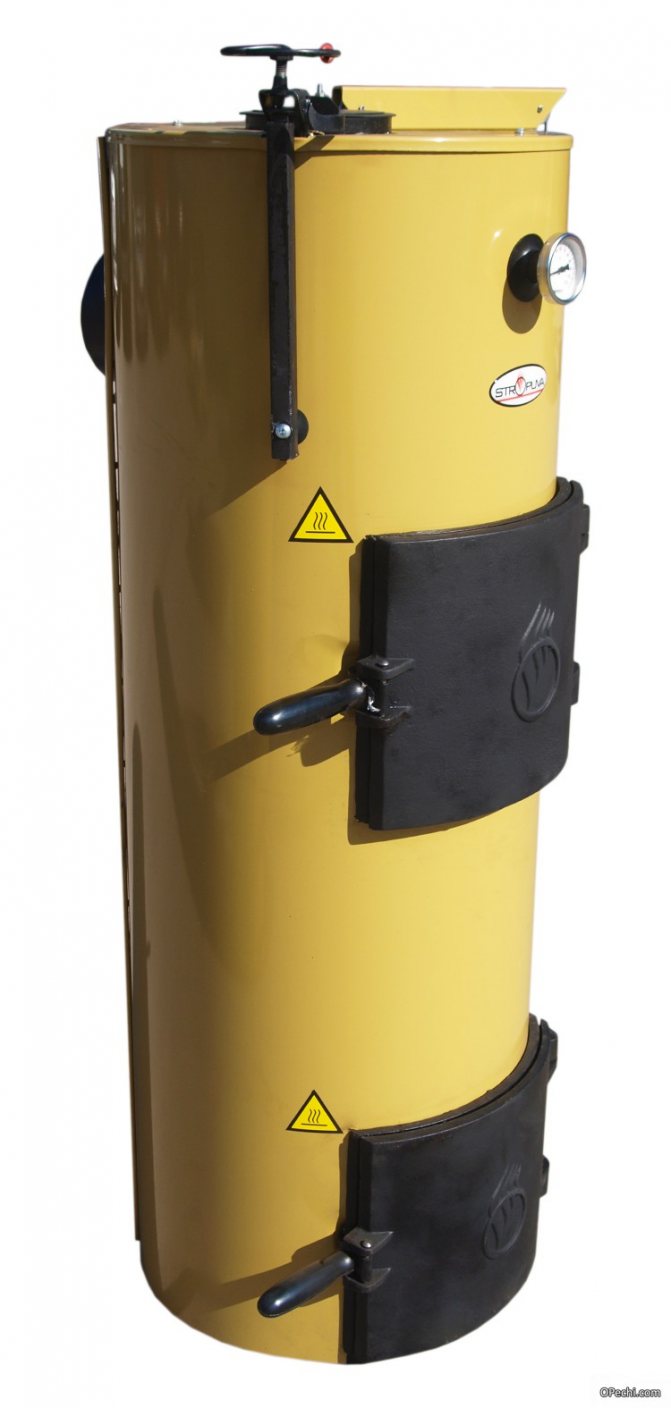
Stropuva oven
Diagram 1. Structural elements of the Stropuva boiler
- Blower damper.
- Damper regulator.
- Damper regulator support.
- Thermometer sleeve.
- Air heating chamber.
- Telescopic diffuser.
- Fuel loading door.
- Nozzle.
- Fuel.
- Ash collector flap.
- Foundation.
- Lever for adjusting the air flow for different types of fuel (only in the "station wagon").
- Window for air supply to the heating chamber.
- Heating circuit supply.
- Chimney flare.
- Thermal valve connector (blast relief valve).
- Telescopic diffuser control cable.
- Travel stop.
- Return line inlet.
This scheme provides the following benefits:
- A large amount of fuel can be loaded.
- Burning out in stages, and not all at once, fuel can be consumed more economically and efficiently.
- Long-term combustion in this design contributes to the maximum heating of the heat exchanger, reducing heat loss through the chimney - the flue gases enter the chimney almost cold.
Table 1. Boilers for long burning Stropuva S-U. Specifications
| Thermal power, kW | 10 | 20 | 40 |
| Efficiency,% | 91,6 | ||
| Heated area, m2 | 50–100 | 100–250 | 200–400 |
| Maximum fuel volume, l | 120 | 200 | 330 |
| Power of electrical units, W | 20 | 20 | 20 |
| Time of complete combustion of one maximum load of coal, days | 4 | 5 | 5 |
| Fuel | Wood, coal, | ||
| Weight, kg | 196 | 246 | 333 |
| Water temperature, оС | 85 | 85 | 85 |
| Maximum water pressure in the unit, bar | 2 | 2 | 2 |
Since Stropuva's heating devices do not produce excess heat, there is no storage tank in the structure. Due to this fact, the boiler, in comparison with analogues, turns out to be smaller in size.
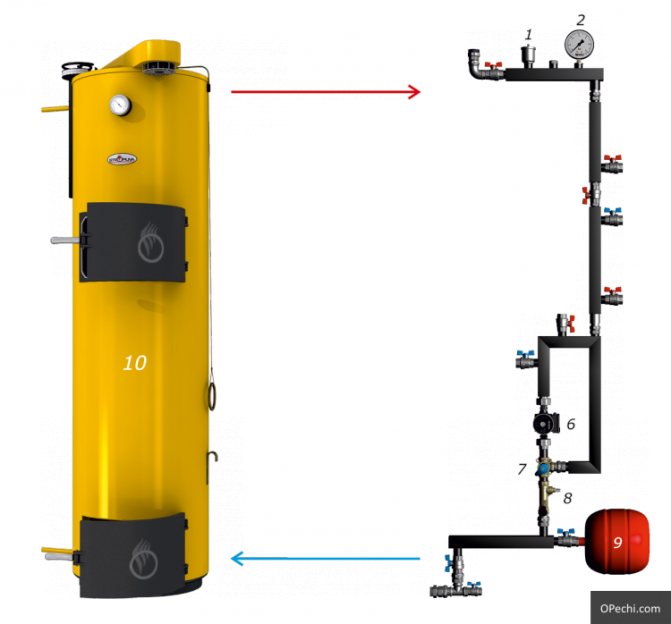

Furnace strapping Stropuva
The design provides for a bimetallic draft regulator (does not require power supply), which allows the consumer to regulate the oxygen supply to the furnace, changing the combustion force and the temperature of the coolant.
Note: The length of the chimney for such a boiler is, in general, 4.5 m. According to this characteristic, Stropuva boilers are not inferior (and more often superior) to other solid fuel counterparts. These dimensions allow you to save on the initial costs for the chimney arrangement.
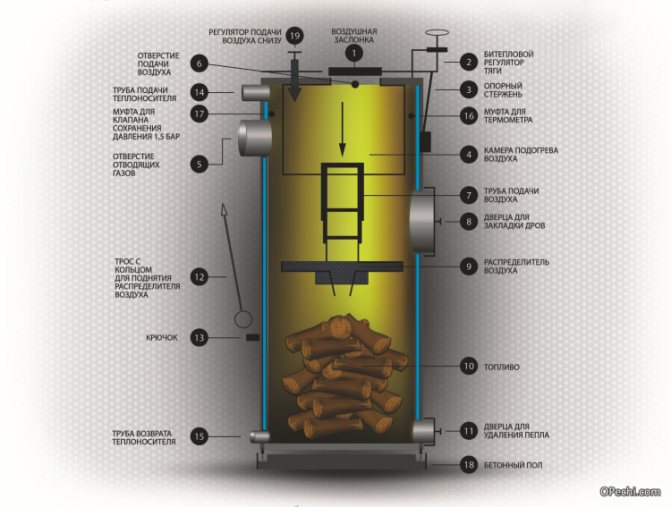

The structure of the boiler Stropuva
Other benefits:
- non-volatile operation or extremely low power consumption for embedded systems;
- high efficiency - up to 90%;
- reliable layout and manufacturing quality ensure operational safety. The boiler belongs to the class of "non-explosive": when overloaded, it is compressed inward (where a vacuum is formed), without destroying the room.
Table 2. Dimensions of universal boilers Stropuva S-U
| Rated power, kW | 10 | 20 | 40 |
| Height, mm | 1920 | 2120 (1920*) | 2120 (1920*) |
| Diameter, mm | 450 | 560 | 680 |
* - delivered on request
New connections for solid fuel boilers Stropuva are already on sale
Recommended piping scheme for long-burning boiler Stropuva S40 / S40U (option 2)
The operation of the circuit with connecting a boiler, without a backup boiler and underfloor heating
The circulation pump (P) supplies the heating medium from the heating system, passing it through the boiler.
The heated coolant from the Stropuva S 40 boiler (1k) is fed through an indirect heating boiler (B). With a sufficient diameter of the boiler inlet pipes, the valve (3) closes and the entire flow of the coolant goes through the boiler, which is connected in series, so the water in it heats up faster.
After heating the domestic water (DHW), the coolant enters the radiator system.
(bk3 - 17) - balancing valve designed to regulate the flow. With its help, the flow from the circulation pump is distributed so that it is enough to heat the radiators, and at the same time, so that it is sufficient for the boiler itself. The total flow volume depends on the power of the circulation pump and can be changed by switching the pump speed positions. A 50-100 W circulating pump is enough.
(bk1 - 3) - balance valve of the protective gravity radiator, with the help of which the flow is adjusted so that the return pipe of the radiator is about 40 ° C colder than the supply pipe.
Recommended piping scheme for a long-burning solid fuel boiler Stropuva S40 / S40U with connecting a boiler and underfloor heating, without a backup boiler
Fig. 8. Elements of the prefabricated boiler room
1. Air vent, 2. Reduction ø 25 - 1, 3. Reduction ø 32 - 25, 4. Nipple ø 25, 5. Tee ø 25, 6. Connection ø 25, 7. Elbow ø 25 internal, 8. Nipple ø 15, 9. Pressure relief valve 1.5 bar, 10.Ball valve with nut ø 25 int., 11. Ball valve with nut ø 25 int., 12. Nut connection of the circulation pump ø 25, 13. Circulation pump, 14. Ball valve ø 15 int., 15. Three-way directional valve ø 25 , 16. Valve nut connection ø 25, 17. Elbow ø 15 female / male, 18. Elbow ø 25 female / male, 19. Filter ø 25, 20. Balancing valve ø 25, 21. Reduction ø 25 - 20, 22. Expansion tank, 23. Plug ø 25 out., 24. Cross ø 25, 25. Tee ø 25 - 15, 26. Three-way mixing valve ø 25, 27. Balance valve ø 15, R - in / out of radiators / s, B - to / from the boiler / a, F - to / from the underfloor heating / a, H - to / from the dryer / s with thermostatic valves
3-way directional valve ø 25 (15) can be installed manually.
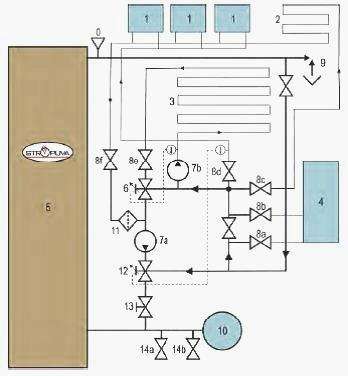

Fig. 9. Recommended piping scheme for long-burning boiler Stropuva S 40 (option 3)
Operation of the circuit with connecting a boiler and a warm floor, without a backup boiler
The heating medium heated in the Stropuva S40 / S40U boiler passes through steel pipes ø 25. The air is removed from the device through an automatic air vent (0). A safety valve (9) is installed on the external circuit.
The heat carrier is directed along the external circuit to the three-way mixing unit (12). A mixing unit (12) in the lower part of the circuit is required for mixing the return heat carrier after the circulation pump.
The temperature difference between the supply and return coolant must be within 15-20 ° C. Accordingly, at a flow temperature of 75 ° C, the return temperature should be 55-60 ° C.
The boiler (4) is connected in a small circuit through the valve (8a, 8b). After heating the boiler, water enters the nearest radiator (2) through the balance valve (8c).
An additional radiator (2) must be connected autonomously. The radiator is necessary to prevent the boiler from overheating when the circulation pump (7a) is turned off.
The radiator system is connected at the top of the small circuit through a valve (8d). The return line from the radiators is fed to the circulation pump (7a) through a valve (8f). On a small circuit, after taking the coolant to the radiators, the underfloor heating is connected through the circulation pump (7b).
The heating medium from the underfloor heating return line is supplied to the three-way distribution valve (6) through the valve (8e).
A three-way mixing valve (6) is required for mixing the supply and return lines and bringing the temperature of the underfloor heating supply line to a temperature of 25-35 ° C.
The three-way diverting valve (12) is connected to the circulation pump (7a) in a common return line. In the lower part of the circuit, after the mixing unit (12), a balancing valve (13) with a flow meter is installed to regulate the flow of water into the boiler.
In the return line, after the balancing valve (13), drain valves (14a, 14b) are installed to make up and drain the coolant from the system, as well as an expansion tank (10). The pressure in the expansion tank should be 0.5-0.8 atmospheres.
Types of boilers Stropuva
All boilers from Stropuva are manufactured in accordance with the strict standards of the European Union, therefore they are of high quality and excellent reliability.
At the same time, the range of long-burning Stropuva solid fuel boilers can be divided into several types, each of which has its own characteristics:
- On the wood;
- On pellets;
- Universal models.
Let's consider them in more detail.
Sling on the wood
- The structure is designed on the principle of the upper combustion method, which allows heating the house on one tab for 30 hours.
- The models are characterized by high efficiency - up to 86.3 percent.
- Stropuva wood-fired boiler systems are used to provide heating to houses with an area not exceeding 400 square meters.
- The range of wood-fired boilers includes five models with a capacity of 8-40 kW.
- Wood-fired boilers must not be fired with coal, as this may damage the heat exchanger used.
- A certain drawback is the inability to add firewood when burning fuel. Loading is carried out only during kindling.
- The consumption depends entirely on the model and the mode in which you turned on the boiler.If the house has an area of 200 square meters, you will need 60-80 kilograms of firewood for 30 hours.
- Often a piping scheme is used with connecting a boiler or underfloor heating. The piping scheme, which includes an indirect heating boiler, has also gained popularity. Finding a drawing for a strapping is quite simple.
Pellet sling
Stropuva pellet boilers can operate in two different modes:
- Burning firewood in conditions of prolonged burning. The boiler can operate for 30 hours without additional loading and with a minimum load;
- Burning pellets. One bookmark is enough for 72 hours of battery life.
Despite the almost complete similarity in technical characteristics with the Stropuva wood-burning boilers, pellet models have their own characteristics.
- Pellets are burned with special burners. The fuel gradually goes down as the pellets are burned.
- Due to its scheme, the efficiency increases, heat losses are reduced.
- The circulation of the coolant is constantly carried out around the heat exchanger, which gives a quick and uniform heating of the element.
- The piping scheme with the connection of an indirect heating boiler has shown itself perfectly. Although a strapping scheme with a warm floor is also not uncommon today.
- Actual fuel consumption may differ from the stated characteristics by the Stropuva manufacturer, due to the lower quality of the pellets used or poor maintenance. It is not a problem to find a drawing for self-connection.
Universal Stropuva
As the name suggests, these Stropuva models are designed to run on multiple fuels. Namely:
- Coal;
- Firewood;
- Wood waste;
- Pellets.
What do you need to know about these solid fuel boilers from Stropuva?
- Universal boiler models, as shown by numerous tests, are the most economical among the entire range of solid fuel heating equipment manufactured by Stropuva.
- It is impossible to use only wood waste as an independent solid fuel for the operation of the boiler. Be sure to add some high quality solid fuel when lighting up.
- To keep equipment operating at a high level, regular maintenance is essential. The user manual of the device contains all the necessary instructions.
- If it is planned to carry out piping in order to connect a boiler, underfloor heating or an indirect heating boiler, the circuit must comply with the manufacturer's requirements.
- The best fuel for a universal boiler is coal. With its help, the period of autonomous operation of the equipment increases, the heat transfer rates increase.
- Under normal loads, when the boiler is not loaded with solid fuel to the limit, it is capable of operating for 130 hours.
- Universal models are ready to take on board, that is, to place 220 kilograms of solid fuel inside their firebox.
- During the operation of the Stropuva universal model, it is strictly forbidden to add coal to the inside of the furnace. This is not a safe solution, which may entail certain consequences.
Advantages and disadvantages
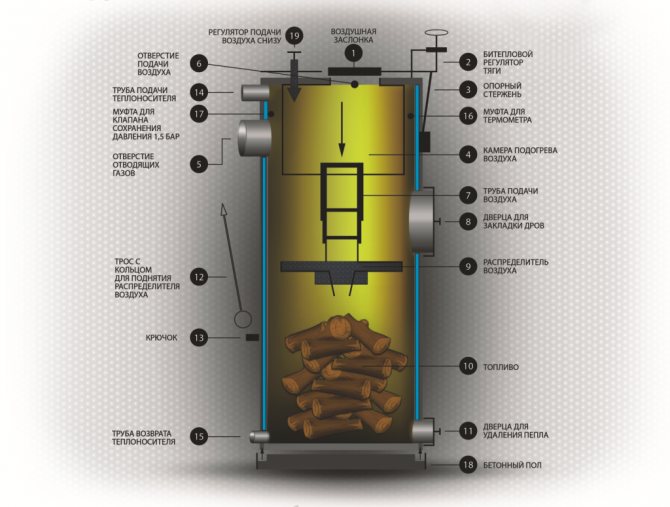

Sectional diagram of the Stropuva boiler
It is worth briefly listing the main advantages of the Stropuva boilers:
- Efficiency and convenience - they do not require expensive gas supply for their installation, and a long operating time on a one-time fuel filling saves money and time.
- Energy independence - there is no electronics in the design, therefore wood-fired boilers, when used in a gravitational heating system, do not need electricity.
- Safety and reliability - one of the advantages is control with a bimetallic valve - a simple and trouble-free draft regulator.
- Aesthetics along with simplicity - STROPUVA boilers differ from a similar type of devices in their elegant appearance and compact placement. The clear design of the unit eliminates any difficulties in operation.
Among the disadvantages, the following can be noted: their performance is strongly influenced by the moisture content of the loaded fuel. But this is rather a minus of all solid fuel boilers, and not of a specific brand in particular. The solution here is simple - keep wood or coal in a dry place.
Comparison of the Stropuva boiler and the Bubafonya furnace
We will start our analysis with the scope. If we are talking about a residential building, clearly, the advantage belongs to the Stropuva boiler. The characteristics of this unit allow it to work for a long time on one load, it is stable and reliable. At least there have not been any cases of complete refusal yet. The principle of operation of the Stropuva boiler allows you to connect to it both high-temperature heating and a hot water supply system with underfloor heating. Bubafonya cannot boast of this.
Rather, it is suitable for heating greenhouses, garages, and maximum summer cottages. For more serious projects, it is simply not applicable. The advantages of the Stropuva boiler design:
- continuous work on coal for 5 days;
- temperature stability;
- convenience of loading fuel, compared to Bubafony.
There are also disadvantages, such as the complexity of the piping, the need for a separate room and the impossibility of repairing to a complete stop. It is also impossible to add fuel while the furnace is in operation, and therefore it is necessary to re-fire it every time after a new load of the furnace. But at the same time, for serious projects, of the two compared units, only the factory Stropuva furnace is suitable. But the invention of Afanasy Budyakin is great for utility rooms, since the Bubafonya stove can be made quickly and inexpensively, which in this case is of decisive importance.
Checking the boiler sling
Before permanent use of the boiler, it is imperative to carry out tests of its functionality. This is necessary in order to further operate the boiler in a safe mode.
So, you will need to fill the barrel of the apparatus with firewood up to a third. From above, it is covered with a lid, and before that you need to throw a match into the barrel so that the fire begins to flare up. For better ignition, it is imperative to add kerosene there.
Ideally, the firewood should immediately burn up. At the same time, there should be no draft, no smoke, no smell. If any of the above is observed, then you should not use such a boiler. With a high probability, he will harm the owners of the house. However, if everything was done correctly, then there shouldn't be such problems.
The specified amount of firewood is enough to heat a small room for a day.
Stropuva boilers on wood
The design and construction of all Stropuva solid fuel equipment is based on the principle of top combustion. Thanks to this, the boiler is able to work up to 30 hours from one tab. At the same time, the efficiency reaches 86.3%.
The Stropuva long-burning solid fuel wood-burning boiler is designed for heating small houses and cottages with a maximum area of up to 400 m². The line includes five models with capacities ranging from 8 to 40 kW.
It is forbidden to heat long-burning wood-burning boilers on Stropuva with coal, as this can lead to the loss of the integrity of the heat exchanger. It is better to heat coal combined universal models.
A small disadvantage of wood-burning boilers of upper combustion is that it is possible to load firewood into the furnace only before kindling, it is impossible to refuel during the combustion process.
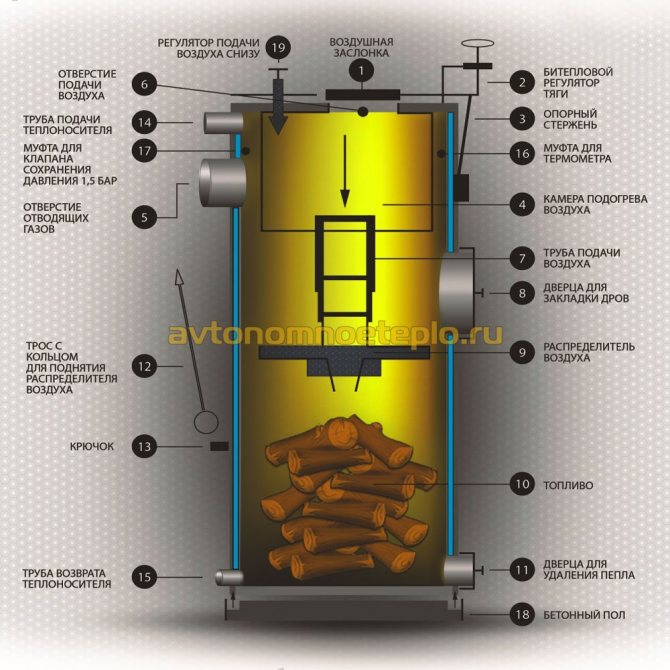

Basic models
You can buy a Stropuva boiler in specialized stores that are dealers of the manufacturer, as well as in online stores. The minimum price is 60 thousand rubles for the minimum power model. Let's continue the review with a description of the manufactured models.
Lanyard Mini S8
Before us is the smallest wood-burning boiler with a capacity of 8 kW, designed to heat rooms up to 80 square meters. m. It works on wood briquettes and wood, equipped with a safety valve and a thermometer. The heating temperature of the coolant is from +60 to +95 degrees. The maximum pressure in the circuit is up to 1.5 bar. The efficiency of the model is 85% - a pretty good result for solid fuel equipment. The estimated cost of this boiler is 61 thousand rubles.
Lanyard Mini SP8
This boiler differs from the previous model in its support for working on pellets. In this mode, it needs to be connected to a 220 Volt power grid - electricity is used to operate the fan used in the fuel ignition system. When working on wood and briquettes, the boiler works in an autonomous mode. The rest of the parameters are almost 100% similar.
Slings S20
One of the most popular models. It allows you to heat residential buildings with an area of up to 200 sq. m. The boiler is built according to a non-volatile scheme, briquettes and ordinary firewood are used as fuel. Burning time is up to 31 hours. If you want to forget about laying fuel for a few days, we recommend purchasing the Stropuva S20U modification - it can work on coal, providing up to 120 hours of continuous combustion. The Stropuva S20P model can work on pellets for up to three hours.
Slings S40
Before us is the most powerful boiler in the entire line. Its thermal power is 40 kW, burning time - up to 31 hours, heated area - up to 400 sq. m. The device is equipped with a rather impressive jacket-heat exchanger, containing 58 liters of water. The maximum pressure in the system is up to 2 atmospheres at an average temperature of up to +75 degrees. More than 90 kg of firewood is placed in the combustion chamber of the device. Modifications are also available for operation on pellets and coal.
Other models and manufactured modifications
Also on sale are solid fuel boilers from the Stropuva company with a capacity of 15 and 30 kW. They are designed for areas up to 150 and 300 sq. m.All models considered in the review are available in three modifications:
- The main one is that the equipment operates only on wood and fuel briquettes (euro wood).
- With index P - it is possible to work on pellets, burning up to 72 hours.
- With the U index - units with the ability to work on coal, burning time up to 120 hours.
Naturally, the actual burning time can be shorter - it depends on the characteristics of the fuel (type of wood, degree of dryness).
Some people have design requirements for heating equipment.
If it is really so important to you how the boiler looks, then we have good news - Stropuva produces his equipment in several colors. The main color (and most common) is yellow
It is possible to purchase boilers in brown, blue, red, green and black colors. Spotted color is also provided (yellow and dirty green).
How the boiler Stropuva works
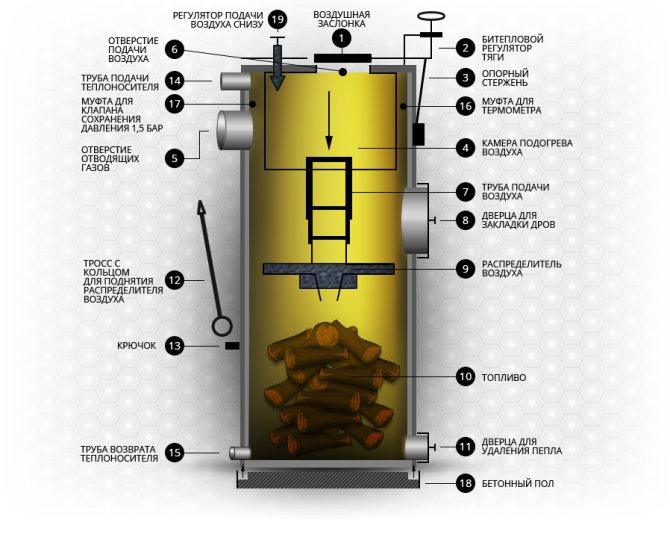

Unit design features
The Stropuva boiler has an original design, which is built on the following elements:
- Water jacketed housing. This is the supporting part of the apparatus, equipped with a double wall with an internal space filled with a coolant. Below and above such a tank there are supply and return pipes.
- The firebox. A cylindrical container where firewood or other combustible material is placed. Two shafts with doors lead into it: one for supplying wood, the second for removing ash, as well as a smoke removal channel.
- Air heating chamber. It is necessary so that oxygen coming from the street to the area of fire burning does not lower the set temperature and does not cool the heat exchanger.
- Oxygen distributor. The element is made in the form of a nozzle with stops, in the middle of which there is an opening connected to the air heating chamber by means of a telescopic pipe. The distributor is controlled by means of a ring and a cable.
- Manual air damper. It serves to reduce, increase the flow of oxygen into the combustion chamber.
- Thermometer and pressure relief sensor.
The long-burning solid fuel boiler Stropuva is installed on a concrete base, which has a strictly horizontal position.
Installation and assembly of the Stropuva S20 boiler
The Stropuva S20 / S20U / S10 boiler is installed in rooms that meet the national requirements for boiler rooms. The height of the room in which the device will be installed must be at least 215cm.
The floor must be concrete (at least in the place where the boiler will stand). The room must be insulated from the heated living quarters and must have a vertical ventilation duct and a window or hole in the outer wall so that air from outside can easily penetrate into the boiler and the ventilation duct.
Using a mirror, the inside of the chimney is inspected through the chimney cleaning hole.
The chimney must be clean. It should be free of fittings or bird nests and openings in hollow ceilings and adjacent shafts.
It is checked whether there are openings in the chimney from the outside, through which parasitic air can enter, cooling the chimney and reducing draft in it. All openings and joints in the chimney must be sealed.
If there are internal holes in the chimney in ceilings or adjacent shafts and it is impossible to seal them, an oval or cylindrical stainless steel liner must be inserted (rectangular liners are unreliable due to holes formed at the joints due to temperature changes).
The installation of the Stropuva S 20 boiler is carried out directly on the concrete floor, and the gaps between the floor and the boiler are closed with a heat-resistant material (silicone (180˚C) or a solution of lime and cement with sand or other materials).
The boiler can be placed on a concrete bottom for installation with a sealing rope.
When carrying the unit, sometimes its parts are deformed, therefore, after installing it in the chimney and closing all the doors, as well as the holes for cleaning the chimney, check the operation of the upper damper, whether it adjoins the surface of the air supply hole, and the tightness of the doors using a candle flame or matches.
Standards and requirements for the installation of the boiler Stropuva S20 / S20U
Chimney requirements
The diagonal of the chimney opening can be 10% less than indicated in the basic technical data, but not more than twice.
Optimal strapping material
Plumbing connections are being actively transferred to plastic pipes and related fittings. This is a practical, convenient and financially sound solution, but there are a number of nuances in using this material. So, underwater channels in accordance with the regulations must be rigid. Therefore, at the sections of the approach to the branch pipes, it is recommended to dock propylene with metal components. At home, this problem is often solved by means of a steel squeegee or "American". Further, the channels are spread through the plastic. It is convenient in the implementation of complex circuits, but connections in the contours should be done carefully.
It is advisable to mount the piping of the heating boiler using the pipe soldering method, in parallel using fittings of suitable formats. It is advisable to avoid abrupt transitions, since the same polypropylene under dynamic loads loses the rigidity of the joints and after a while leaks can be detected. The only material that should be completely abandoned in the installation of the strapping is rubber and all its derivatives from tow to paronite with rubber. Under the influence of heat, they quickly lose their sealing and adhesive qualities, reducing the reliability of the system.
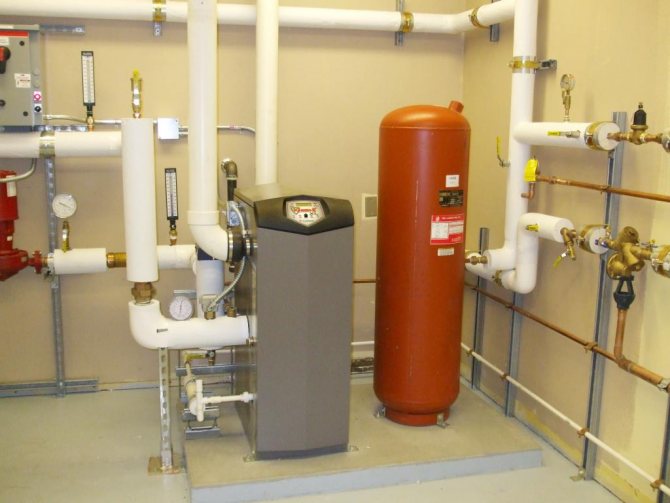

How to start the boiler Stropuva
First you need to purchase a piping kit for connecting the equipment with the heating system. We recommend buying a kit with the ability to connect an indirect heating boiler. It includes a set of pipes, a safety group, an expansion tank and a circulation pump. Also on sale are kits for connecting warm floors.
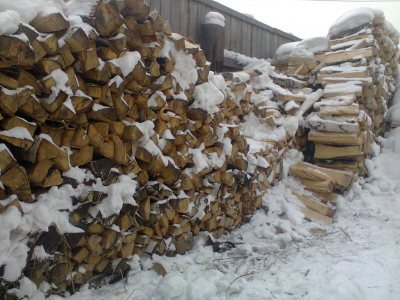

It is not recommended to use raw firewood - this will become an obstacle to the normal operation of the boiler.
Ignition is carried out in the following way - here's a short instruction for use:
- We load a full firewood combustion chamber with the air distributor raised.
- We fill up the finished masonry with sawdust.
- We open the flap for switching to firewood.
- Open the air damper 3-5 cm.
- We kindle the top layer, cover the loading door, leaving a gap 3-5 cm wide.
- We wait for a steady combustion, close the loading door and immediately lower the air distributor.
Please note that the cleaning door must be closed. A new portion of firewood can be thrown into Stropuv's boiler at any time, but it is dangerous to do this with coal
In any case, the manufacturer recommends to always wait for the final burnout of the fuel before adding a new portion.
A new portion of firewood can be thrown into Stropuv's boiler at any time, but it is dangerous to do this with coal. In any case, the manufacturer recommends to always wait for the final burnout of the fuel before adding a new portion.
Two-pipe system with top routing
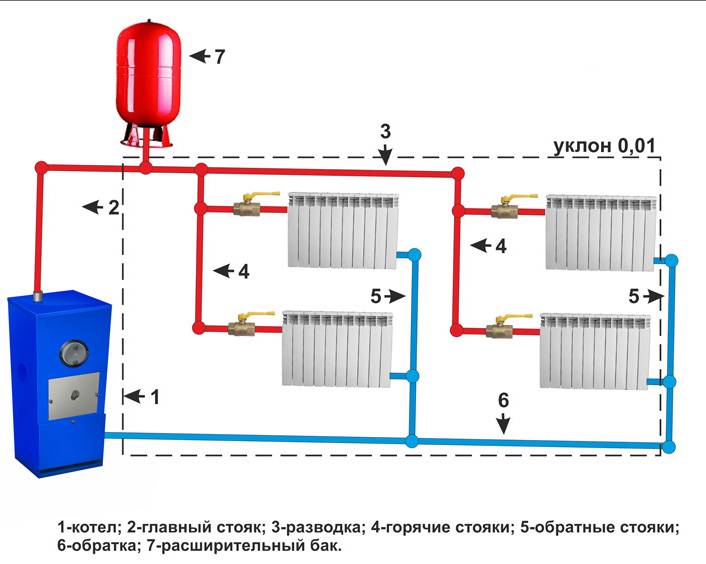

In a two-pipe heating system with top wiring, the expansion vessel is placed at the highest point.
This two-pipe scheme is very similar to the previous one, only it provides for the installation of an expansion tank at the very top of the system, for example, in an insulated attic or under the ceiling. From there, the coolant goes down to the radiators, gives them some of its heat, after which it is sent through the return pipe to the heating boiler.
What is such a scheme for? It is optimal in multi-storey buildings with a large number of radiators. Thanks to this, a more uniform heating is achieved, there is no need to install a large number of air drains - the air will be removed through the expansion tank or through a separate drain that is part of the security group.
Advantages and disadvantages of the top-wired two-pipe system
There are a lot of positive features:
- you can heat multi-storey buildings;
- savings on air drains;
- you can create a system with natural circulation of the coolant.
There are also some disadvantages:
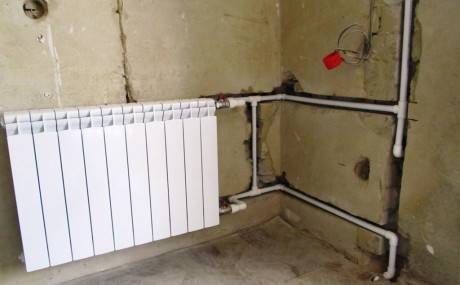

The use of vertical wiring will lead to additional difficulties in the hidden installation of heating.
- pipes are visible everywhere - such a scheme is not suitable for interiors with expensive finishes, where elements of heating systems are usually hidden;
- in tall buildings, it is necessary to resort to forced circulation of the coolant.
Despite the disadvantages, the scheme remains quite popular and widespread.
Features of installation of two-pipe systems with top wiring
This scheme provides for the absence of the need for the location of the heating boiler at the lowest point. Immediately after the boiler, the supply pipe is led upwards, and an expansion tank is installed at the highest point. The coolant is supplied to the radiators from above, therefore, a side or diagonal radiator connection scheme is used here. After that, the cooled coolant is sent to the return pipe.
About firewood
As mentioned above, the quality of the fuel is of great importance. And for the efficiency of the heating equipment, and to increase its service life. This is especially true for firewood - a very unstable type of fuel. The efficiency of the boiler depends on a uniform supply of fuel, moreover, equalized in terms of its calorific value.
This is most important for modern high-tech heating devices, burdened with automation.
Firewood, however, differ in their technical qualities - humidity, specific heat of combustion. That is why manufacturers of boiler equipment insist on choosing high-quality fuel.
Pellets and fuel briquettes - more efficient fuel for a wood-fired boiler
The simplest way to achieve this requirement is to choose artificial "logs" - pellets, fuel briquettes.
You can read in more detail about the differences between firewood and their types in the article Pros and cons of various types of solid fuel for boilers: wood and its derivatives.
In the manufacturer's recommendations, as a rule, there is an indication of how long the logs are suitable for a particular model of the firebox. There are variants of boilers that fit meter-long logs into the combustion chamber.
A log of a log of strife
Wood of different tree species has a different density, which means - the ability to produce heat. But, in addition to it, other features of firewood are important that affect the operation of the boiler: the amount of non-combustible (ballast) substances and the presence of resins that contaminate the chimney and the internal structure of the device during combustion.
Birch firewood
Birch has dense wood, so it burns hot and emits a lot of heat - 3750 kcal, even if the wood is damp. It is highly flammable. But when burning such firewood, especially damp, tar is released - a substance useful in medicine, cosmetology or for protecting surfaces from decay, but extremely harmful to the insides of the boiler.
Soot on the boiler heat exchanger
Alder firewood
Burning alder wood practically does not emit soot. Moreover, burning alder wood helps to clean the chimney. Alder is highly flammable, burns well and emits a sufficient amount of heat - 2100 kcal.
Aspen firewood
Burning aspen, like alder, cleans the chimney. But by themselves, such firewood, when burning, emit a little heat - up to 1650 kcal.
Pine firewood
They burn well and quite hot (3800 kcal), but pine wood is resinous, and a lot of soot is formed during combustion.
Firewood in the warehouse meter
Spruce firewood
Spruce firewood is comparable in quality to pine firewood, but it has a slightly higher specific heat of combustion - 3900 kcal, moreover, it is less resinous.
Poplar firewood
Poplar burns hot, but burns out quickly.
Apple and pear firewood
Firewood from fruit trees - apple or pear - has dense wood, which means it emits a lot of heat, burns and smolders for a long time. But these breeds are usually grown for the sake of fruit, so such firewood is not common. Another feature: the trunks of pears and apple trees are gnarled, the chocks do not prick well, and the logs are knotty, it is difficult to stack them tightly in the firebox.
Oak, beech, ash firewood
Oak, beech, ash have dense wood, when burning these species a lot of heat is released - up to 3600 kcal. Of the minuses of oak or beech firewood, one can name their rarity on sale and the difficulty in splitting and melting the boiler with them.
Taking into account the described qualities of wood as fuel, a good owner stores different types of firewood: some - so that they easily flare up, the second - so that they burn for a long time and hot, and others - to periodically clean the chimney from soot.
Tying in a forced circulation system
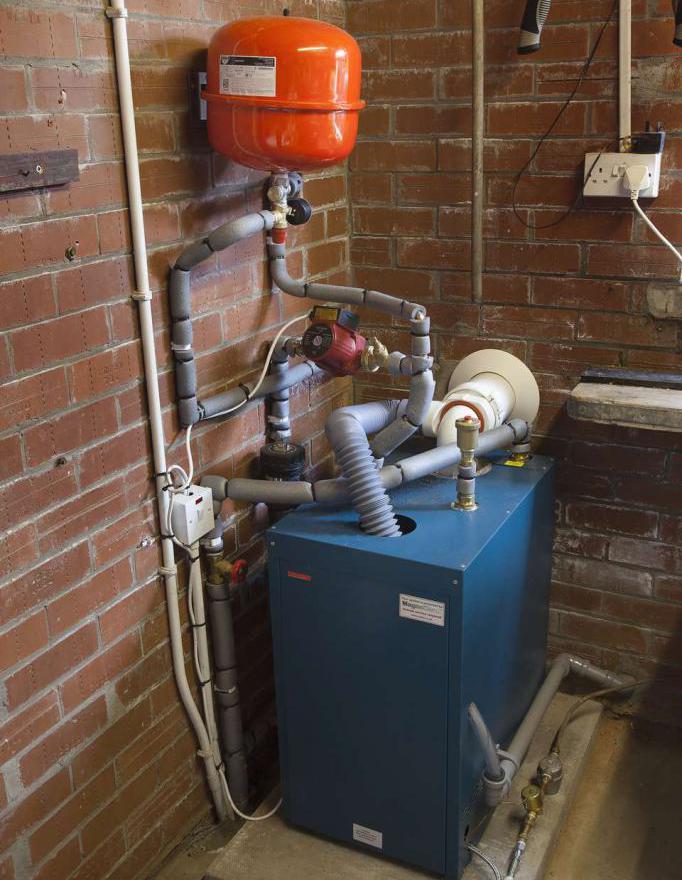

The inclusion of a pump in the system provides three positive operating factors:
- Reducing the size of the switching infrastructure (piping).
- The ability to automate control.
- Stability of maintaining the force of movement of the coolant.
But even in this case, one cannot do without careful calculations of the flow circulation balances. First of all, a pump is connected at the lower inlet point to stimulate the passage of cold water. At the upper level, the piping of double-circuit boilers also provides for the inclusion of a circulation unit, which will serve the hot streams entering the radiator installation. The principal feature of such a scheme will be the possibility of introducing a boiler installation with hydraulic heat equalizers along all circuits. But, again, it is possible to correctly organize the operation of the forced heating system only with detailed calculations of the circuits with an emphasis on consumption volumes and boiler power.
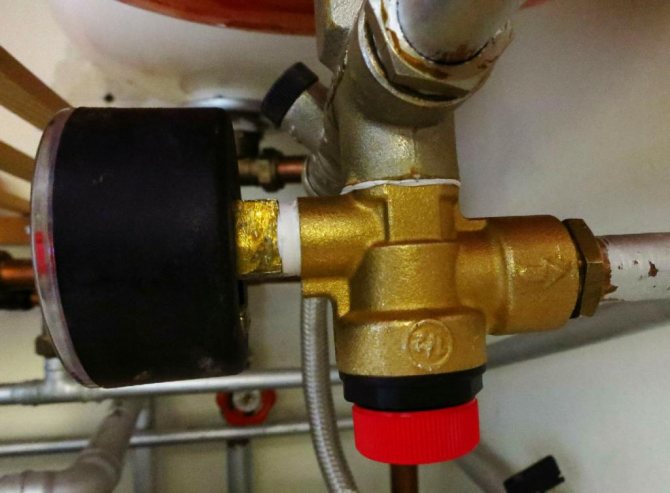

Work reservation
The Stropuva boiler will delight you with a long burning fuel. But even in this case, you can miss the moment of the next bookmark. As a result, the temperature of the coolant in the heating circuit will begin to drop. To prevent this from happening, we recommend installing a backup electric boiler in the circuit. Upon detecting a drop in temperature below the set limit, it will turn on and maintain the set temperature.
Electricity consumption will be small, if you do not forget about laying firewood for 2-3 days. Most of the time, the boiler will burn, providing consumers with heat. Therefore, one should not expect huge expenses. In addition, the auxiliary boiler does not have to be as powerful as the main one - a model with a capacity 2-3 times lower is quite enough, so as not to rattle teeth by the morning. We also recommend that you work on insulating your home so that it retains the accumulated heat for a longer time.
What equipment does the boiler interact with?
As the functionality of heating units increases, the area of action also expands. While traditional single-circuit wood-fired boilers are capable of generating only thermal energy, modern multifunctional installations support a whole range of tasks, including the maintenance of hot water supply. Heating water with a boiler alone covers radiators, a floor heating system and other circuits through which the coolant flows. In each case, complex boiler piping configurations are implemented, using assembly fittings from different groups. At a minimum, these should be distribution units, valves, taps, shut-off fittings, thermostats and, in general, control automation. One of the most critical piping circuits is the connection line to the circulation pump, due to which a sufficient force of water movement through an organized system is maintained.
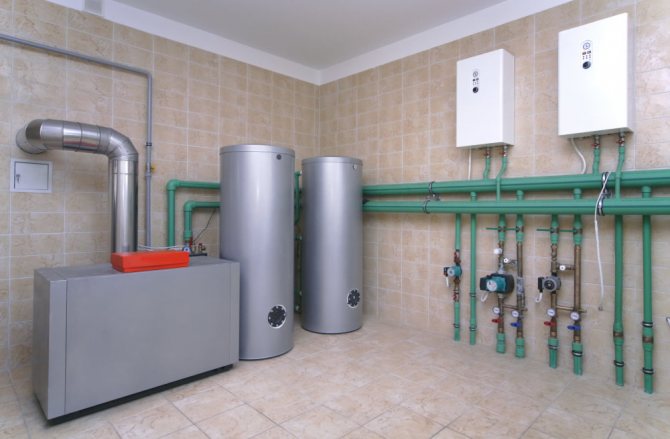

How to light a boiler
In cycling, the most difficult thing is not to ride, but to start and finish the movement. So it is in the operation of the boiler - the most difficult thing is to melt it. Do not expect that lighting the boiler will take you little time: you will have to allocate about an hour for this procedure.
Heating a wood boiler is a responsible occupation
Commencement of the furnace - ash removal and preparation of the boiler for operation. After the ash pan and combustion chamber are cleaned, you can proceed to kindling.
Heating up the boiler furnace and chimney
For your own comfort and proper start-up of the boiler, you need to warm up its firebox and chimney. If the heater is not equipped with a forced smoke exhaust system, in order for the fuel to start burning, it is necessary to create a draft. The formation of thrust is based on Archimedes' law: heated gases become lighter and tend to "float". For their movement and removal, heating devices operating on fuel combustion are equipped with a chimney.
Boiler diagram. Photo of the site www.viessmann.ru/
The design of the boiler is such that the path for smoke is difficult: on its way there is a heat exchanger and a convective surface of a complex shape, which reduces the speed of movement of combustion products. And the chimney pipe is usually located horizontally, which also makes it difficult for the smoke to move. Therefore, if the boiler is not warmed up, the combustion products are looking for the easiest way. And more often than not, smoke begins to seep into the room.
In some cases, the vertical part of the chimney is equipped with a flood (a small furnace that serves to warm up the chimney) with a door, opening which you can burn a small amount of flammable fuel (for example, paper) directly in the chimney itself. When using flooding, the inside of the chimney is warmed up.
If such a possibility is not provided, then a kindling is laid in the firebox - crumpled paper, birch bark - something highly flammable. On top of the kindling - chips and splinters, then logs of small thickness. The combustion chamber must be filled with firewood to no more than half of the estimated volume.
At the moment of kindling, you need to open the chimney damper and the blower valve, ensuring the flow of combustion air.
There are tips to open the window in the boiler room before starting the furnace, if there is one: do not forget that oxygen is needed for the physicochemical combustion process.
How to properly heat the boiler with wood
It takes about 5 cubic meters of air to burn a kilogram of firewood. If the air flow into the boiler furnace is made from the boiler room, then it is imperative to arrange supply ventilation - especially if there are no windows in the boiler room or they are sealed (with double-glazed windows).
After placing the logs, the kindling is ignited. When a steady combustion appears, the door of the firebox must be closed and the bookmark must be allowed to burn out.
Achievement of design power
As soon as the combustion chamber and chimney have warmed up sufficiently, you can proceed to the main stage of the boiler operation. To do this, repeat the kindling process using well-burning materials. Now the main laying of firewood is already complete in order, according to the instructions for the device, to fill the combustion chamber.
After the fuel has ignited, the boiler will reach its design power after a while. Now the combustion process will take place on its own for some time. How long depends on the volume of the combustion chamber and the principle of operation of the boiler. After the firewood bookmark burns out, you need to make a new one.
A properly working boiler is a source of heat and comfort in a country house
Important! When lighting up, do not use ignition liquids or flammable gasoline, diesel fuel, etc.
Recommended strapping schemes:
The boiler must be installed by qualified specialists who provide guarantees for their work, who are aware of all the installation requirements, who are licensed to carry out this type of work and who have carefully studied the boiler manual.
The unit for protecting the boiler from low-temperature corrosion consists of two circuits.
First "Boiler circuit"
(obligatory when installing Mechikenn boilers) looks like this:
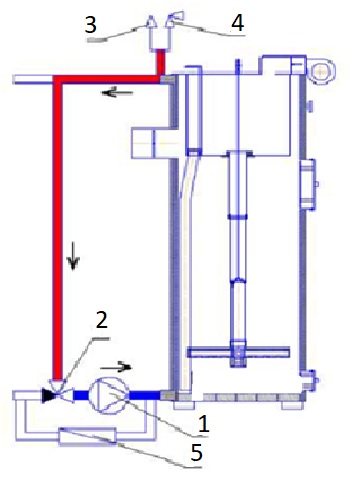

- Circulation pump (with a capacity corresponding to the power of the boiler);
- Three-way thermal valve (with an actuation temperature of at least 550C);
- Automatic air vent (supplied with the boiler);
- Safety valve 1 bar (supplied with the boiler);
- Check valve (in case of a power outage)
How it works:
until the boiler return line heats up above the response temperature of the three-way thermal valve, the circulation pump "turns" the coolant along a small circuit in which there is no heat extraction, thanks to which the boiler quickly overcomes the dew point. When the return line heats up to the opening temperature of the three-way valve, the already heated coolant begins to flow into the second circuit.
Second "Heating circuit"
(it is recommended for installation of boilers "Mechaniken" because it showed the best results in operation) looks like this:
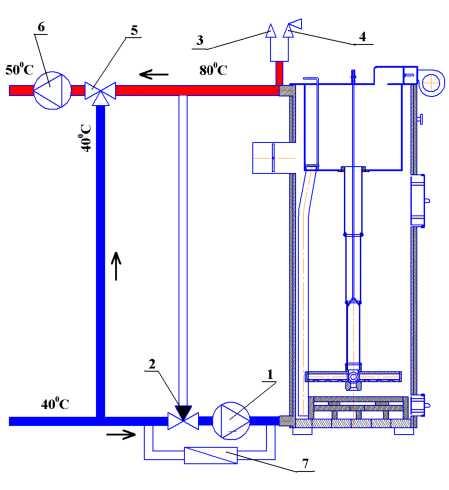

- Circulation pump (with a capacity corresponding to the power of the boiler);
- Three-way thermal valve (with an actuation temperature of at least 550C);
- Automatic air vent (supplied with the boiler);
- Safety valve 1 bar (supplied with the boiler);
- Three-way mixing valve with regulation of the temperature of the heating agent supply to the heating circuit;
- 6.5 Electrical connection: 1.5.1 Connecting the boiler to the mains, electrical connection of the pump (if any) must be carried out by specialists with a corresponding permit. 1.5.2 The electrical connection of the boiler to the electrical network in domestic conditions (220V) is carried out by installing the plug into the socket with the grounding terminal of the electrical network of the room. 1.5.3 All electrical flows must be isolated, housings grounded, installation carried out in accordance with applicable government regulations.
How it works:
after the thermal valve (2) is triggered from the "Boiler circuit", the coolant begins to flow to the three-way mixing valve (5) with regulation of the supply temperature to the heating circuit, the task of which is to supply the heating medium of a given temperature to the heating system by mixing it into the hot coolant from the return line.
What is it for? It's no secret that when solid fuel is burned, the most efficient heat release occurs at a temperature of 700-800 C, this temperature is also the most optimal for the operation of the boiler (there is no gum formation on the walls of the boiler and chimney, little soot formation), but for heating devices ( batteries, underfloor heating) this temperature is too high. It is for this reason that a heating circuit must be installed, after which the coolant is supplied to the heating devices by a circulation pump (6) of a predetermined temperature set on an adjustable three-way mixing valve (5).
Solid fuel boiler Stropuva design and principle of operation
Introduction
Solid fuel boilers Stropuva noticeably differ from other solid fuel heating devices and not only in their original color. Their design is also very unusual. Today we will try to figure out what advantages their design has and what disadvantages. And the real owners of Stropuva heating boilers will share their experience of using them with the readers of kotlydlyadoma.ru.
The history of the Stropuva boiler began in 2000 in Lithuania, when it was invented and patented. Since then, thanks to its original technology, burning duration, high efficiency and energy independence, these devices have taken a worthy place in the heating equipment market.
Boiler connection diagram Stropuva
Piping scheme with a backup heater, hot water boiler and underfloor heating.
After the purchase, filling out the documents, the seller will ask you: "Do you need the help of a master in installing the heater?" Take your time to answer "No." The connection diagram of the Stropuva boiler is somewhat different from other types of solid fuel boilers. On the official website, you can find three strapping options:
- with backup heater, hot water boiler and underfloor heating system;
- only with a boiler;
- with a boiler and a low-temperature underfloor heating system.
Maybe for someone it is, as they say, "one spit", but for a person without specialized knowledge, these schemes cause a stupor. This is not to mention the fact that you independently connect the Stropuva heating boiler. In general, it is still better to use the services of experts in this matter. By the way, opinions have been heard more than once on the forums about the complexity of strapping this equipment.
General guidelines for strapping
In each case, the process of connecting the boiler will have its own technical features and nuances. But there are general rules that should be taken into account regardless of the conditions for performing the strapping:
- The starting point for starting the installation will be the manifold as the central connector.
- The inner pipes must be at least 32 mm in diameter. Large-format circuits are led from the pipeline to the heat generator, and channels with a smaller diameter are directed to the consuming units.
- Water radiators should preferably be located at a level below the distributor. If, however, the piping of the wall-mounted boiler is carried out, then the switching kit will have to turn on the circulation pump, which will balance the distribution of the coolant.
- Measuring and regulating fittings in the form of sensors, filters, pressure gauges and taps are installed at the final stage of installation.

